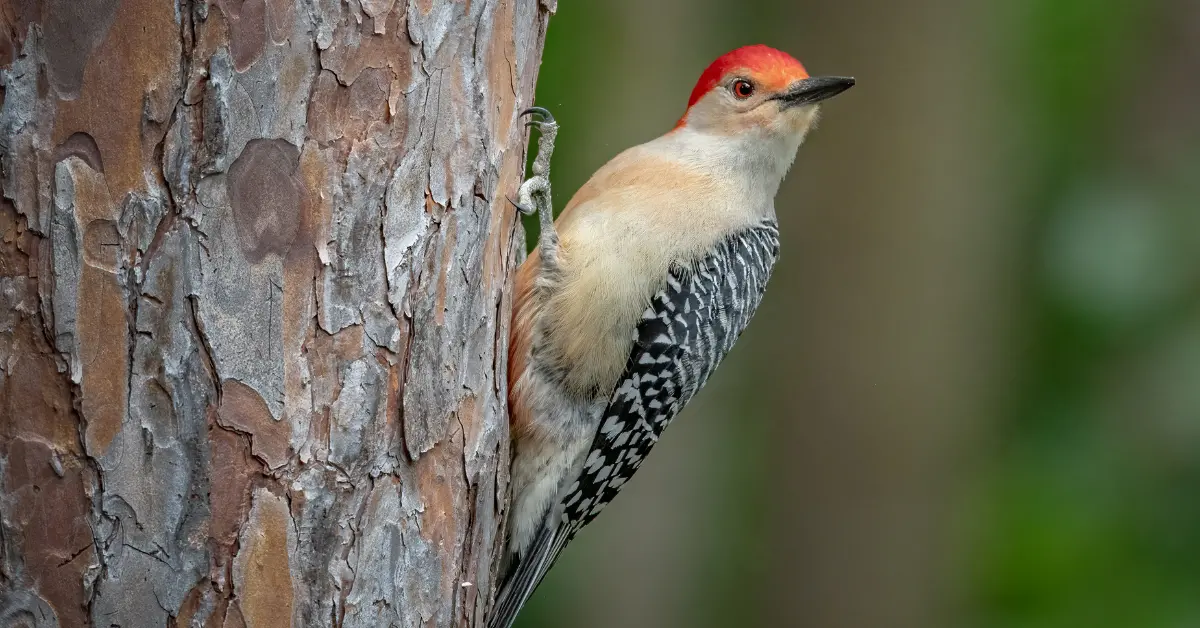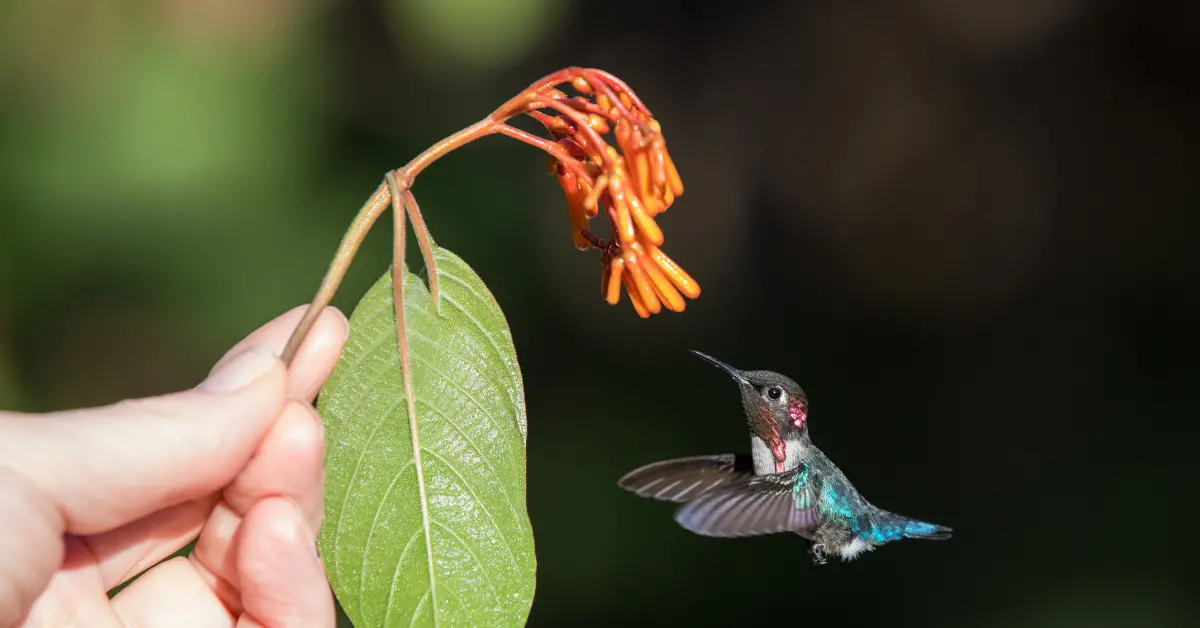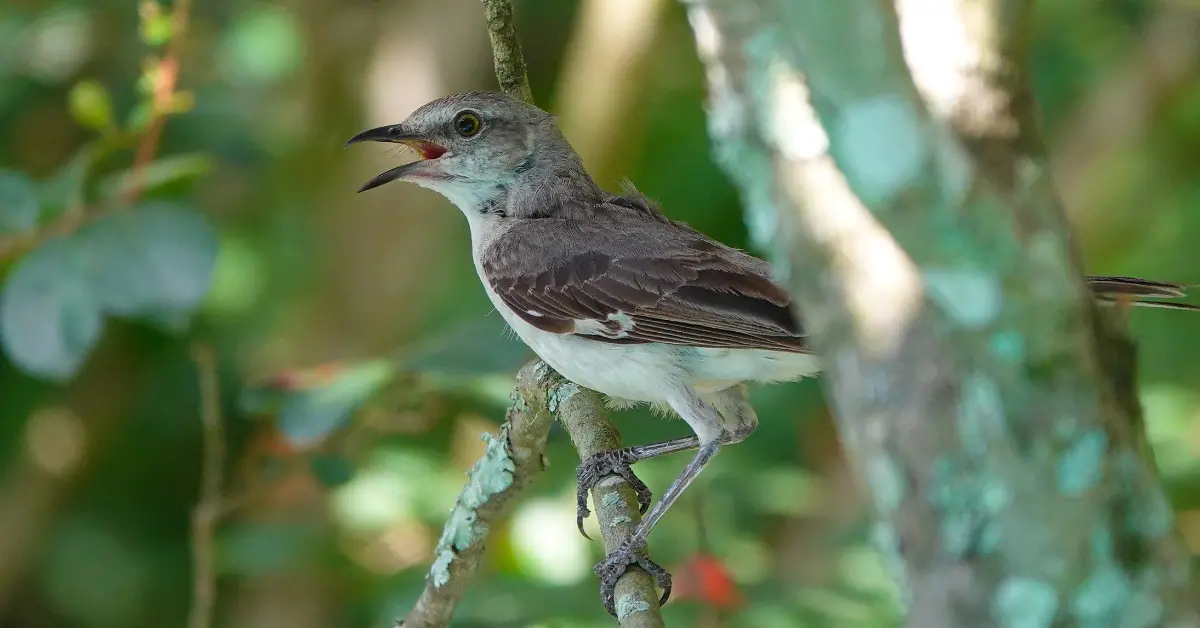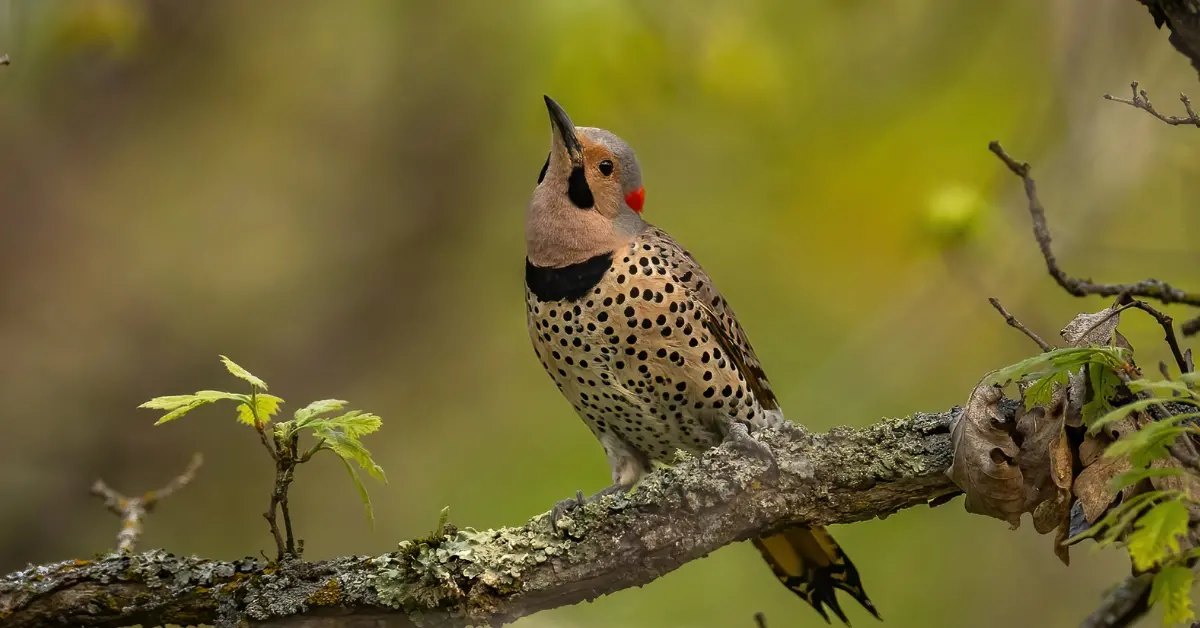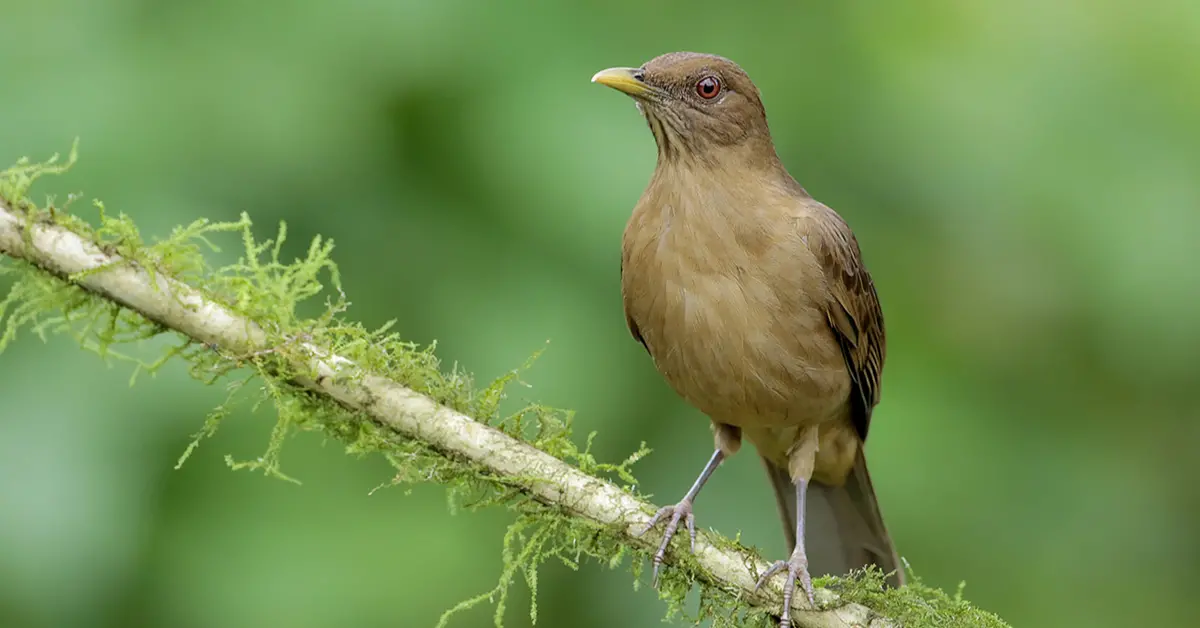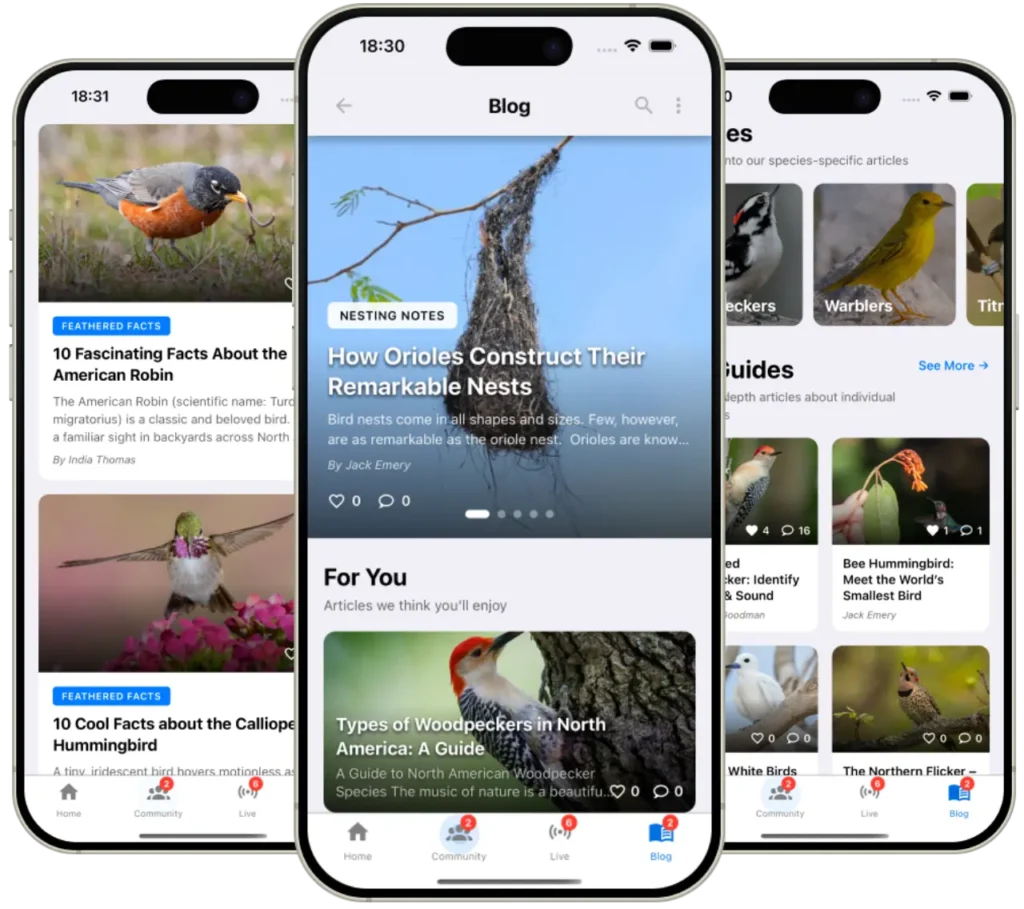The American Robin (scientific name: Turdus migratorius) is a classic and beloved bird. Although a familiar sight in backyards across North America, its charming red breast and sweet whistling song are always a delight to witness!

The American Robin is usually associated with the first sign of spring, but this bird species is found across much of North America all year round. They breed in areas from Alaska and Canada down to Mexico, and they stay the whole year in most areas south of Canada.
Although common backyard birds might not be as exciting as rarer finds, they all have fascinating life histories. Here at Nest Box Live, we like to shine the spotlight on familiar birds unveiling surprising facts you’re unlikely to have heard before!
Here are some fascinating facts about the American Robin – we know some of these will surprise you!
1. They can raise up to three successful broods each year
Imagine having babies not just once a year, but up to three times! For the American Robin, this is a reality.
Their drive to do this is likely tied to the low survival rate of their young. Only about 40% of nests successfully fledge chicks, and just 30% of fledged chicks make it to winter. Of those, only half will survive to the following year

2. They can live to a ripe old age – but most don’t
The oldest known wild American Robin lived at least 13 years and 11 months, which is impressive for a songbird.
However, most robins live only one to two years. Predation from birds of prey and domestic cats, along with pesticide exposure, are the biggest threats to their survival.
3. American robins carry a unique spiritual meaning
Due to its association as the harbinger of spring, the American robin symbolizes the end of one phase and the start of a new beginning. After surviving the winter, the robin appears again, singing its beautiful song. This acts as a reminder to live presently and not to dwell on the past or worry about the future.
As a bird steeped in folklore, there are many superstitions tied to robins, including:
- Robins feeding in your yard means important news is coming.
- A robin perched on your roof protects your home from lightning.
- Robins singing near a wedding bless the couple with lifelong love.
4. Females look different from males and can be harder to identify
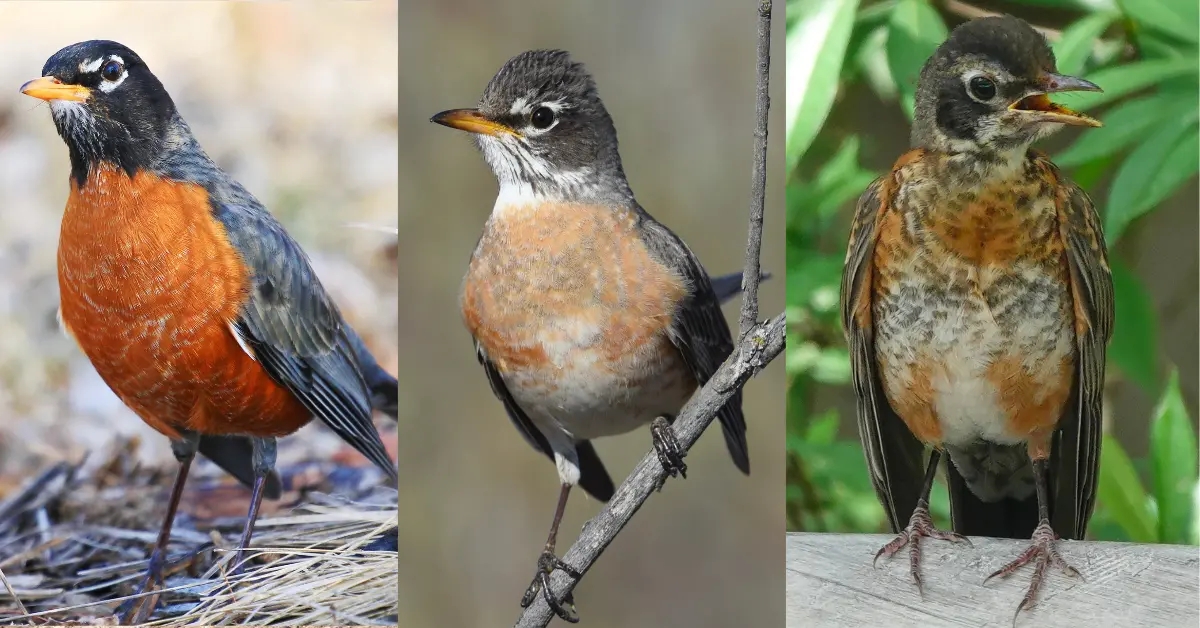
The males are the brightest and easiest to spot: they have a vivid rusty-orange belly, a dark-gray or black head and a bright yellow beak. Female American robins, and young males, are more pale, with lighter orange bellies and gray heads.
Juvenile robins are also less distinct than adult males: their bellies are lighter orange or white with black spots, and their wings are also mottled.
Differences in coloration can also be due to location, as western populations are often paler than eastern populations. There are seven subspecies of American robin across North America, with different body size and plumage. The San Lucas subspecies is the most distinct with buffy, not orange, underparts.
5. There are rare albino American robins
Albinism and leucism (partial albinism) occur when birds lack the pigment melanin, making them completely or partially white.
For an unknown reason, there are more albino or leucistic American robins than any other wild bird species in North America. While occurrence of leucism in other bird species rarely exceeds 1% of populations, around 8% of American robins display albinism or leucism.
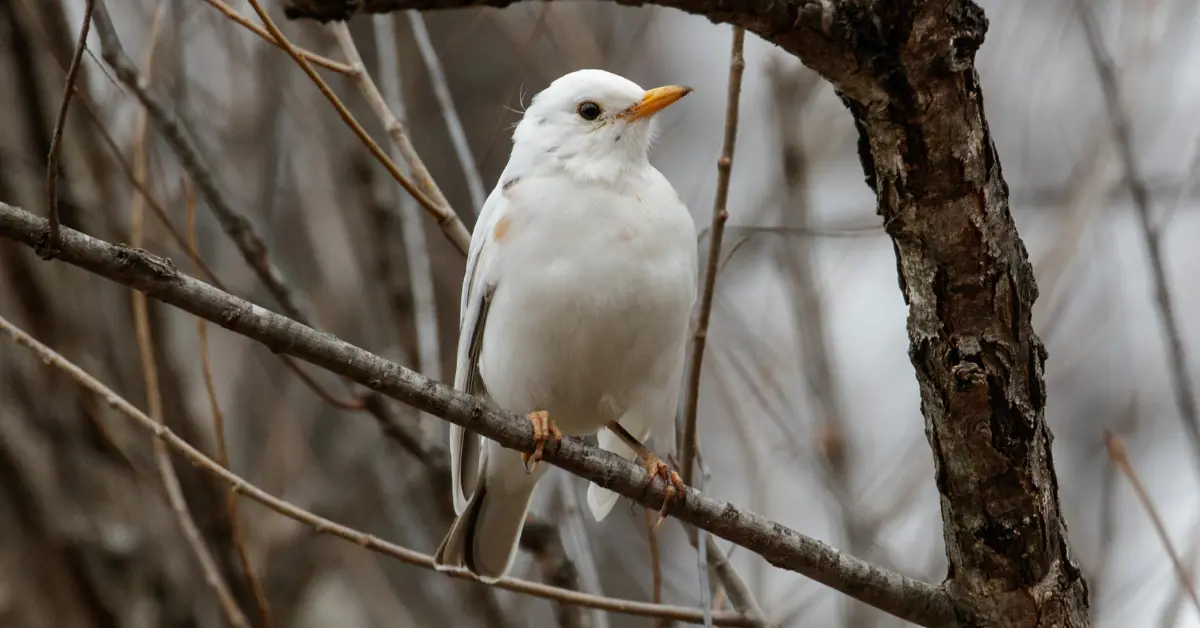
Have you been lucky enough to spot a rare albino American robin? Let us know in the comments below!
6. The American robin song is a string of clear whistles
The song of the American robin is a series of about ten clear whistles that rise and fall in a steady rhythm. They’ll sometimes shorten this song to just a few notes.
Click on the play button below to hear their song:
Robins also make distinct calls:
- A soft cuck or tuk when communicating
- A repeated chirr that rises in volume, sounding like a chuckle, when there’s a mild threat
- A high-pitched seee whistle when an aerial predator is nearby
7. Their eggs are a distinctive sky-blue color
The color of American robin eggs is so distinctive that the color has its own named shade, “robin’s egg blue”. This is the trademarked shade used by Tiffany & Co.
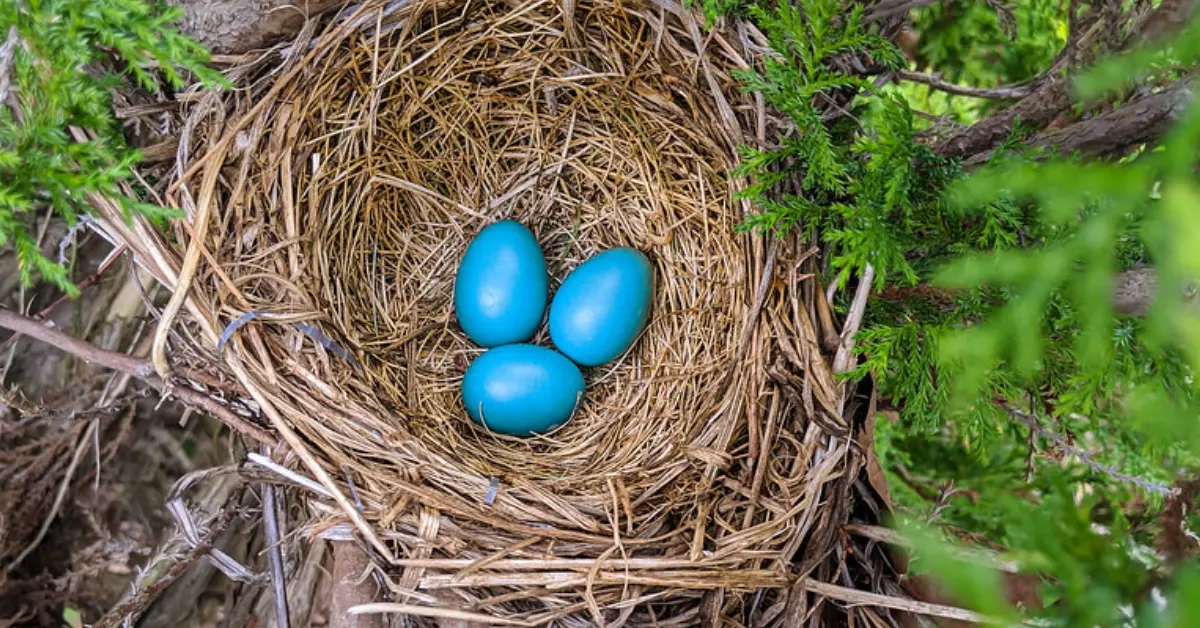
Their eggs are unspotted and 1.1-1.2 inches long. The female robin lays clutches of around 3-5 eggs.
The unique color of the American robin’s eggs comes from pigments in the mother’s blood. A 2016 study suggests the blue pigment may protect the eggs from harmful UV radiation.
8. Females build the nests
Robins usually build their nests lower down in trees or shrubs, but they sometimes choose locations as high as tree tops. They occasionally build their nests on man-made structures like window sills and building ledges.
The female American robin builds an open cup-shaped nest from grass and twigs, using mud to help bind the structure together.
The male assists by bringing nesting materials and defending the territory. Once the eggs hatch, both parents share feeding duties.
9. Their diet can put them at risk
American robins are often spotted foraging on lawns for worms – these make up a large part of their diet. They rely completely on their sharp eyesight to spot worms on the ground, and do not use vibrations, odors or sounds to sense their meal.
But, eating worms can be dangerous for robins.

When pesticides are sprayed on lawns, the chemicals coat the feathers of a foraging robin and are ingested by the bird during preening. These chemicals also accumulate in worms, and can be toxic when eaten.
10. It is not uncommon to see a drunk robin!
Before you begin picturing robins stumbling out of bars, let me clarify – it’s fermented berries that get them drunk, not pints of beer.
In addition to worms, robins eat plenty of wild fruit and berries. In late winter when berries thaw and ferment, yeast converts their sugars into alcohol. The robins ingest these – et voilà – drunk robins!
Signs of intoxication include stumbling, erratic flight, and even crashing into windows.

